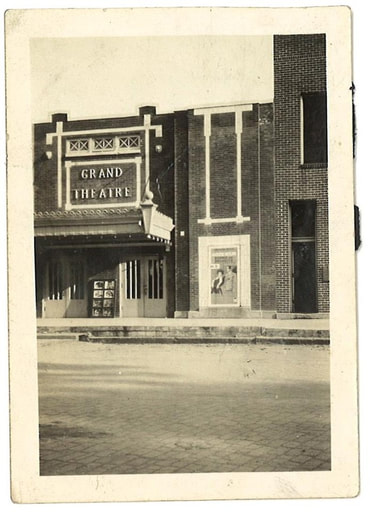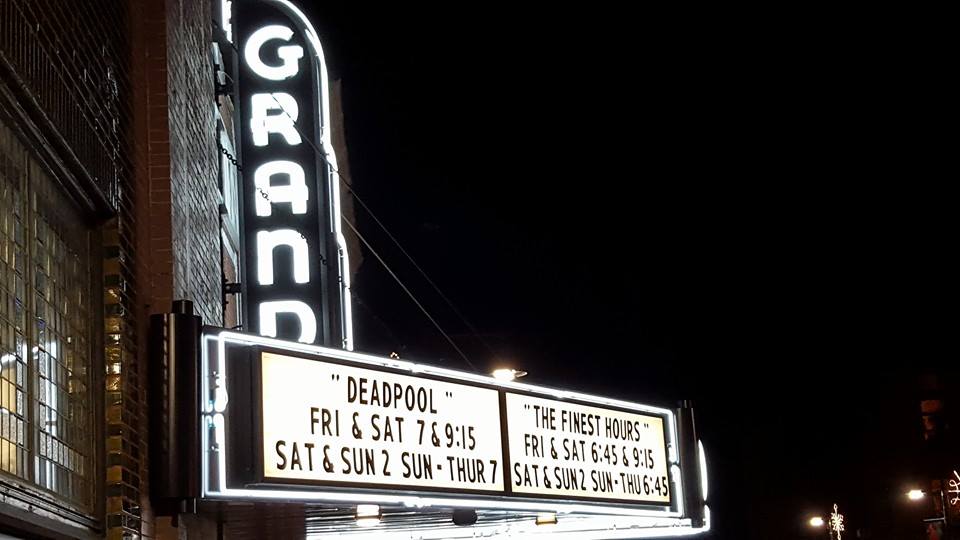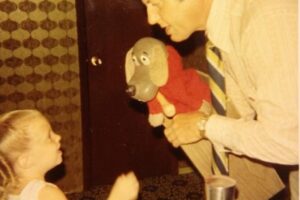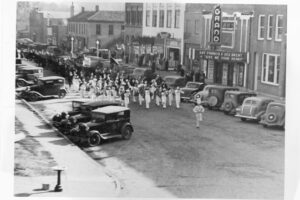The Grand Opera House began its life at a different location than it is now. It was on North 1st & Marion Streets, just north of the Downtown Square across from the present-day Knoxville Hardware. Admittedly, it wasn’t much to look at from the outside, but the sumptuous interior was outfitted with everything a traveling troupe could want to put on a truly brilliant spectacle! At over 700 seats, it compared favorably to venues in Chicago, St. Louis, and other large Midwestern destinations.
The advent of film – including ‘talkies’ – and Knoxville’s continued prosperity brought about the desire for a change of venue.
After the massive fire of 1922, much of the south side of the Square sat empty or otherwise underutilized for a time before many of the buildings we see today were constructed. Because the new Grand Theatre was to be used less as a venue for live entertainment, the footprint was slightly smaller; though, what the structure lacked in size, it made up for in style and craftsmanship.
That said, the theater business has always been a bit fickle, and styles have necessarily changed with the times. Throughout its early life, the Grand was never the only theater in town, so it was important to stay on the cutting edge. As such, theater owners kept pace and continued to update the building – inside and out – for many years.

A new marquee and a tall, neon ‘GRAND’ sign started the sleek, Art Deco renovation of our little theater.
Very shortly after this photo was taken, the owners of the Theatre – the Clara Hoffman family – undertook a series of massive renovations, which included the installation of an enormous air conditioning system (1938), revamped and stylishly updated interiors, and a new black and white Carrara glass facade (1939). This – and the construction of two homes in town – was Mrs. Hoffman’s contribution toward helping Knoxville through the Great Depression.
During the epic Armistice Day freeze just a few years later, the temperature dropped so quickly, that the new tile actually shattered from the building. What was salvageable was reinstalled on the sidewalk level – the remainder of the facade was covered in black and white steel to match the previous tile pattern.
After many years of successful ownership, the Hoffman-Black family sold the Grand, and eventually all of their theater properties to focus on other ventures. It was the Kerr family and their company, Kerr Cinemas, that brought a young man and his growing family to Knoxville in 1960 as manager.
In the years that followed, Carl and Ruth Schwanebeck would come to own the Grand Theater, the Frontier and Hi-Vu Drive-Ins, as well as several other theaters across southern Iowa and northern Missouri. Under their ownership, the theater would undergo more renovation, including ‘twinning’ the single screen venue into a two screen theater, and adding one of the very first in-theater video stores in the country. The Video Mart chain of stores would prove to be successful for years to come, and is yet another example of Knoxville ingenuity.
After deciding to focus their energies on their family and various business and philanthropic causes, Carl and Ruth sold what was by then the Village Theatre II to RL Fridley Theaters of Des Moines. The Fridley chain managed the Village II for nearly a decade before the changing landscape and a changed focus brought them to the decision to close and sell the still profitable theater.
As they have with several of their small town theaters, the Fridley group elected to donate the building to the non-profit group established by a group of Knoxville citizens. Reviving the original name – the Grand – our group, along with countless volunteers, worked to restore this bit of Knoxville history, and with it, a sense of renewed pride and accomplishment to our Downtown and our community as a whole.
Now reopened, we’re able to play host to small and mid-sized live performances, educational presentations, speakers, film series, special events, and community functions… in addition to the newest first-run digital films! By reopening this theater, we have reopened a window to the world, and given future generations of citizens the experiences many of us were fortunate enough to have grown up with. We also hope to have helped insure Knoxville’s continued ability to attract new businesses and families to town, and to foster the kinds of growth we all hope for in the community we’re so proud of.






